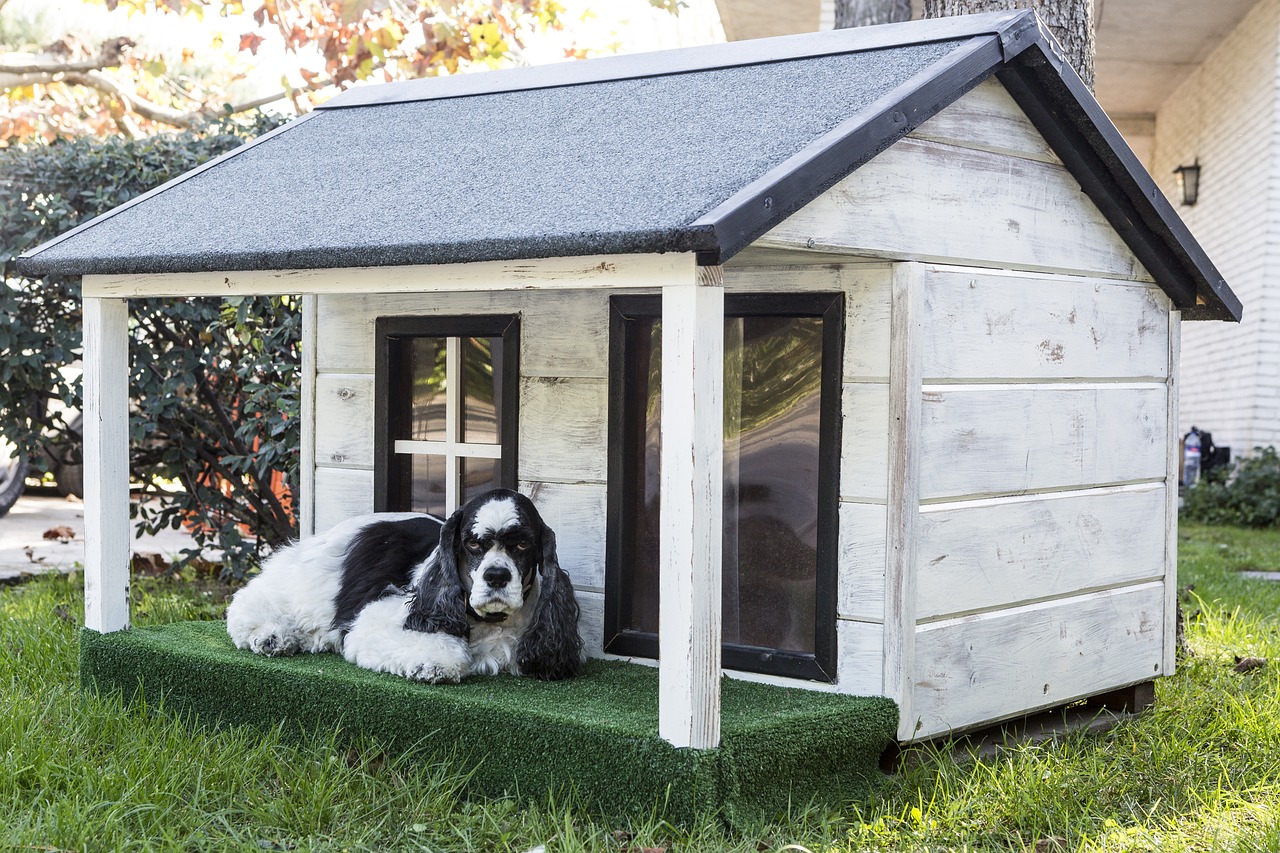Many dog owners prefer that they sleep in the backyard for several reasons. That’s why creating a pleasant environment for dogs as seen in the article “DIY dog yard ideas,” is essential, combined with a good house that makes them safe and comfortable, as seen in this article “dog den ideas.” But what about the rain, what to do?
In general, dogs don’t like rainy days and instinctively look for a place to shelter. A safe and comfortable house is ideal, but some care with the materials used can facilitate construction and keep the animals safe from the weather.
How Do You Make A Weatherproof Dog House?
Dog houses made of wood are the most common but do not protect against rain. To make a waterproof doghouse, you need to pay attention to the material used in the construction, giving preference to resistant plastics and PVC tiles.
A simple and cheap way can be made from an old water tank. Check it out:
- Wash the water tank well
- Remove all stickers and labels
- Dry with a cloth
- Use a primer to fix the spray paint
- Paint with non-toxic spray paint for dogs in the desired color
- Let it dry
- You can use varnish on the finish
- Make a hole with a hot knife and saw with the aid of a hand saw the entire opening of the house
- Use sandpaper to finish and not leave any edges
How Do You Waterproof An Outdoor Kennel?
Suppose you have a house made of wood or other material that is not waterproof; you have to waterproof it. For this, the best method is to put asphalt waterproofing inside the roof, increasing the insulation capacity.
How To Keep A Dog House Dry?
Following these building tips will certainly not have problems with wet houses.
- Choose to put a sloping roof and resistant material, such as PVC tiles, which will allow the rain to drain without improving the interior. You can also use tar paper as an alternative material to waterproof the roof. It is a heavy paper widely used in construction for waterproofing roofs to avoid moisture and can be easily installed with a stapler.
- For the sides of the house, use vinyl coating, a flexible PVC laminate material widely used to cover walls, floors, drinking water reservoirs, and swimming pools.
What Is The Best Material For An Outdoor Dog House?
The best material will depend on the climatic conditions in your region and how much you can spend on materials. Check out the best materials to build a house for your dog.
- Wood: It is the most traditional model of a dog house. It is recommended for dogs that usually stay in backyards, outdoors, or in covered places. Indicated more for cold areas, this model works as a thermal insulator. At the same time, the wood offers freshness on hot days. The wooden dog house is also suitable for large pets, as this material is known for its durability and impact resistance. One of its disadvantages is that wood absorbs moisture and rots more easily. Therefore, a tip is to opt for firmer models made of ipe, peroba, or varnished. If the house is outdoors, it is preferable that the roof is sloping and that the bottom of the product does not directly touch the ground. It prevents the ingress of moisture and water on rainy days. Most wooden models already have feet to create this space between the house and the floor.
Pros:
- Greater durability;
- Better thermal capacity (does not heat up or cool down excessively);
- Available for all dog sizes.
Cons:
- Higher price;
- May rot if left uncovered;
- Greater hygiene difficulty
- Plastic: It is the most suitable type of doghouse. It is light, easy to clean, and easy to carry. A plastic house is a good option both for the property’s interior and the backyard, as it can be kept in open places without damage to the structure. However, keeping an eye on the temperature inside this model is essential. As a disadvantage, the plastic house is colder in winter and, on hot days, it gets too hot. The advantages of this product are related to the ease of cleaning, as it can be assembled and disassembled at any time and carried during walks or trips. In addition, it is the cheapest model on the market.
Pros:
- Good price;
- Practicality;
- Easier hygiene.
Cons:
- Less durability;
- Low thermal capacity (heats a lot in the heat and cools down in the cold if kept in an open place).
- Fabric: A fabric dog house is a good option for small dogs, as it is difficult to find for large dogs. It is prettier and more comfortable than the others but also more fragile. Therefore, this model is not suitable for use outdoors, only inside houses or apartments.
The excellent point is that the fabric house matches the furniture of the house and can even be used as decoration, as it resembles camping tents. Despite tearing more quickly, this type is washable due to the fabric and portable, ideal for those who usually transport the dog.
Pros:
- Beauty;
- Comfort;
- Easily washable and portable;
- It can also serve as a walkway.
Cons:
- Few sizes available;
- Material fragility.
After choosing the best house for your best friend, it’s time to equip it. The goal is to make the space as cozy and attractive as possible, so the dog feels at home.
The most recommended accessories are mattresses or pillows, some (few) toys, and a blanket or cloth on cold days. The idea is to be careful not to exaggerate and harm the pet’s locomotion and comfort. And, always have extra items so you can sanitize them and your pet doesn’t run out.














